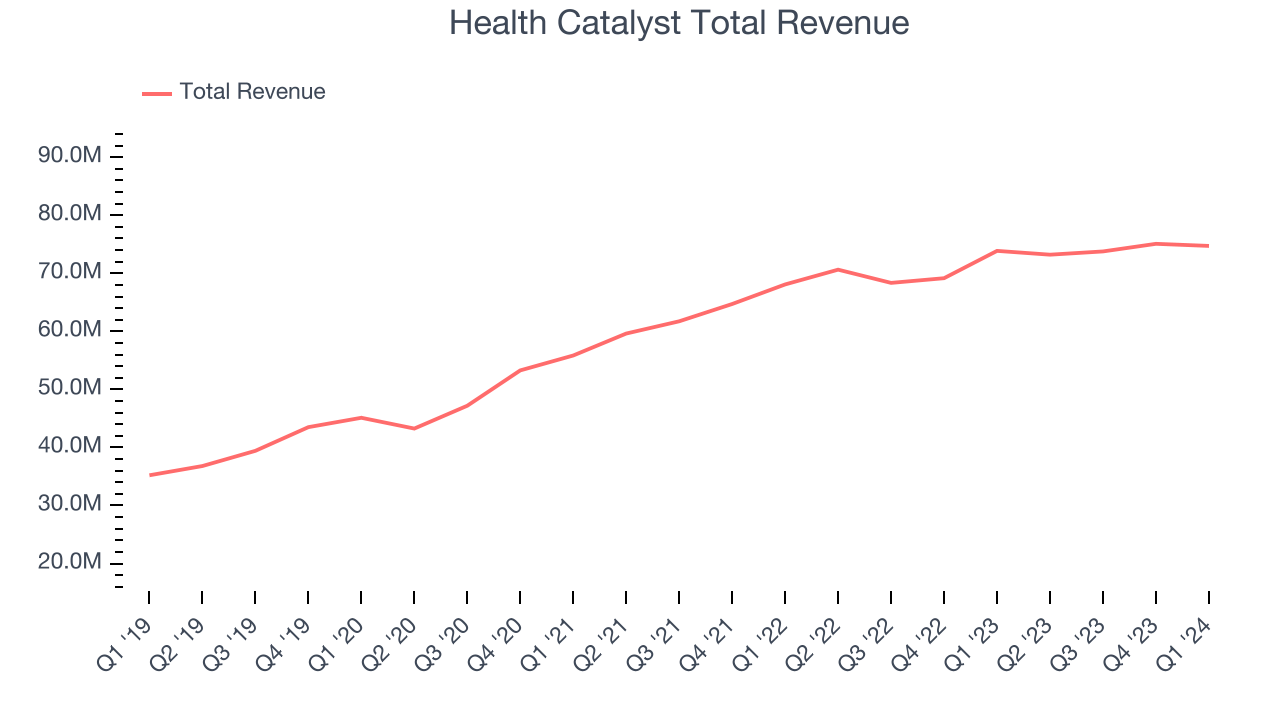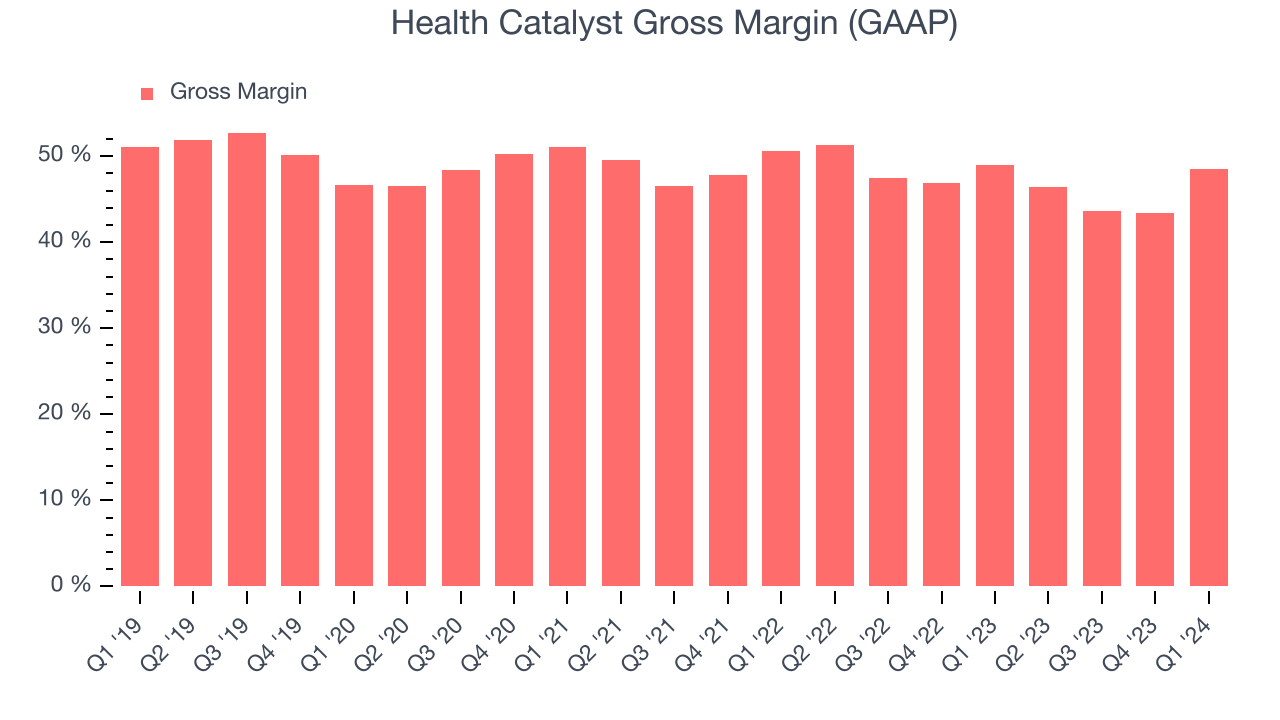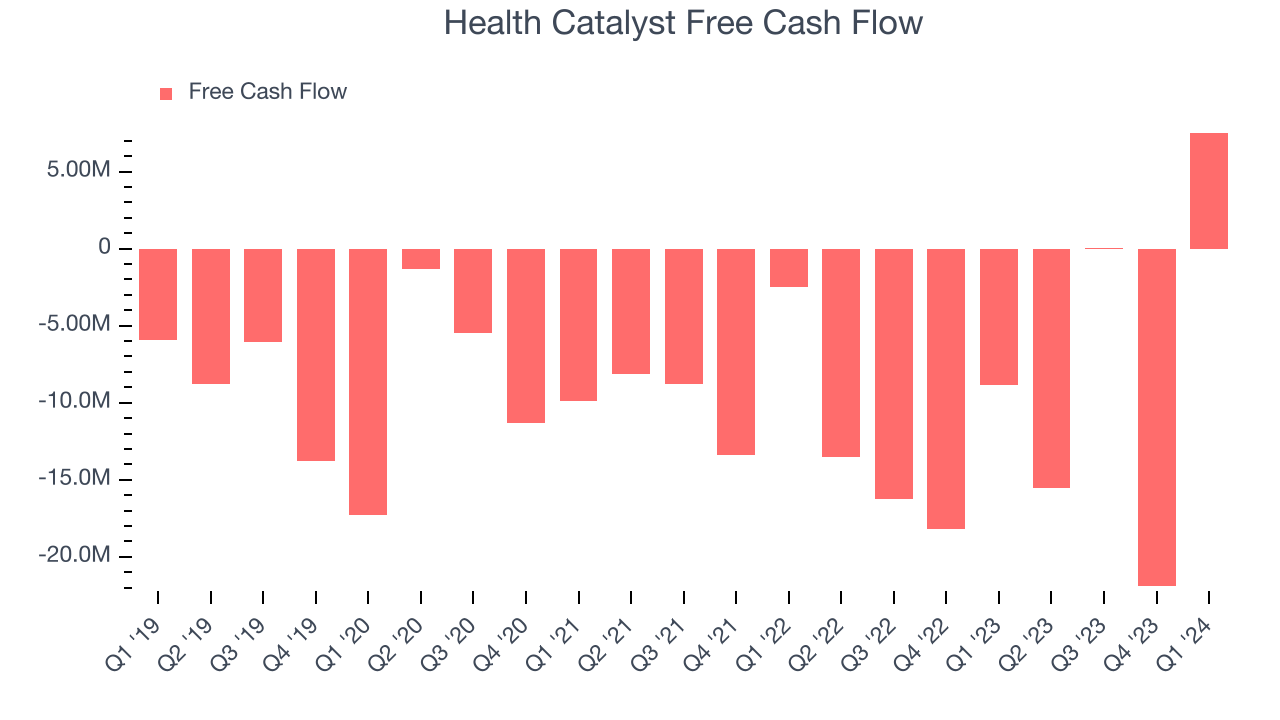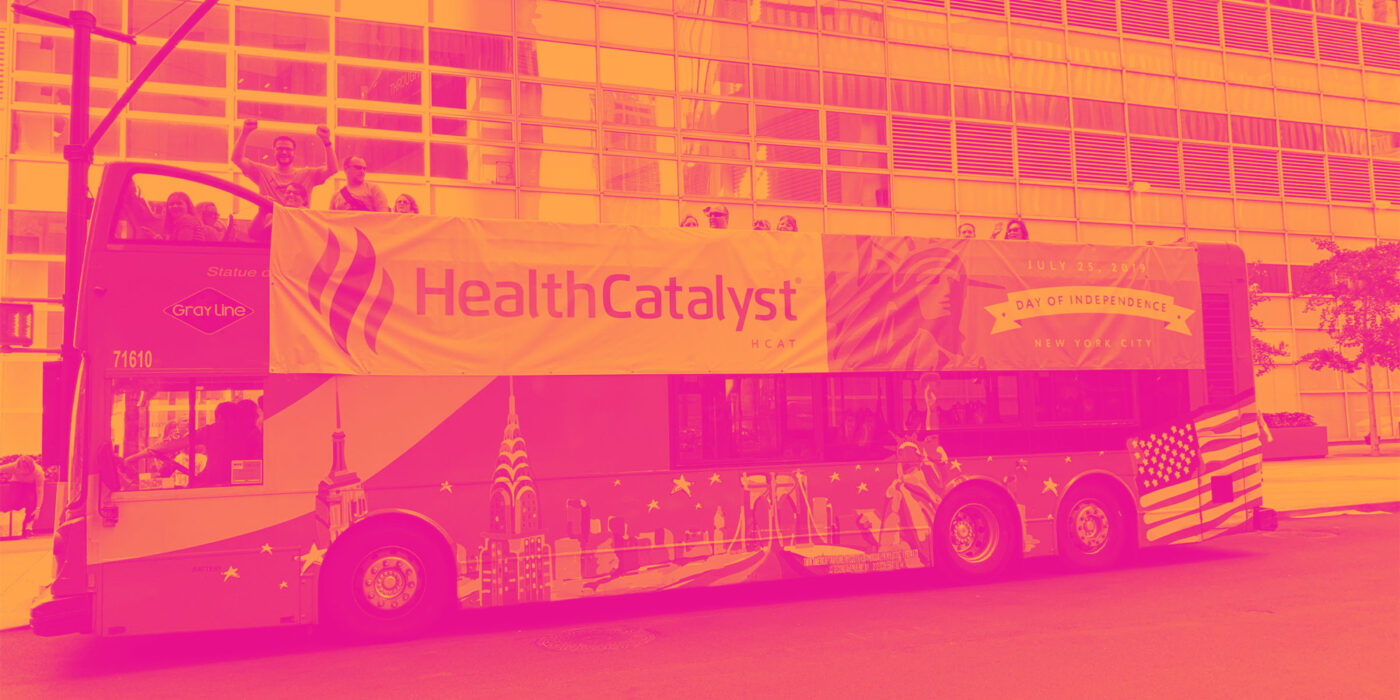Healthcare software provider Health Catalyst (NASDAQ:HCAT) reported results in line with analysts' expectations in Q1 CY2024, with revenue up 1.2% year on year to $74.72 million. On the other hand, the company expects next quarter's revenue to be around $75 million, slightly below analysts' estimates. It made a non-GAAP profit of $0.05 per share, down from its profit of $0.05 per share in the same quarter last year.
Health Catalyst (HCAT) Q1 CY2024 Highlights:
- Revenue: $74.72 million vs analyst estimates of $74.81 million (small miss)
- Adjusted EBITDA: $3.37 million vs analyst estimates of $2.89 million (beat)
- EPS (non-GAAP): $0.05 vs analyst estimates of $0.03 ($0.02 beat)
- Revenue Guidance for Q2 CY2024 is $75 million at the midpoint, below analyst estimates of $75.61 million
- The company reconfirmed its revenue guidance for the full year of $308 million at the midpoint (slight miss)
- Gross Margin (GAAP): 48.5%, down from 49% in the same quarter last year
- Free Cash Flow of $7.53 million is up from -$21.92 million in the previous quarter
- Market Capitalization: $392.6 million
Founded by healthcare professionals Tom Burton and Steve Barlow in 2008, Health Catalyst (NASDAQ:HCAT) provides data and analytics technology to healthcare organizations, enabling them to improve care and lower costs.
Healthcare sector is undergoing a major digital transformation, but as funds are poured into the digitization of health care records and processes, organizations are confronted with the reality that gathering the data is just the first step toward actually lowering costs and improving care, and the real challenge is making that information useful. To be able to succeed in today’s healthcare environment, hospitals need data from 50 to 150 different sources, but often or able to access less than 10, as they are typically running a number of siloed systems that are unable to communicate with each other and are generating data that is very difficult to query and analyze.
To solve these problems, Health Catalyst provides a centralized software platform that enables organizations to aggregate data from healthcare sources inside and outside of the hospital and manage it all in one place. This data then flows into Health Catalyst’s data analysis software that has been tailored for healthcare use and is even able to provide organizations with AI-enabled predictive capabilities that are powered by data that Health Catalyst accumulated from more than 100 million patient records. And because hospitals are often struggling with enough competent IT personnel, a large part of the business is providing expert services to help healthcare providers derive meaningful insights and actually improve patient outcomes, reduce healthcare costs and enhance customer experience.
For example, a small hospital in Louisiana was within six months able to decrease sepsis mortality rate to half of the national average. Sepsis is a growing problem in the United States, and it is a serious medical condition caused by a strong immune response to infection that can lead to very severe and potentially fatal outcomes. The hospital set up a new screening tool and an online dashboard that showed them how often the sepsis treatment protocol is applied, how well the screening is done, and how quickly the physicians are getting to see the patients. Then they used Health Catalyst to help them identify cases that need further scrutiny and zoom in on individual patients and providers, and intervene as needed.
Data Analytics
Organizations generate a lot of data that is stored in silos, often in incompatible formats, making it slow and costly to extract actionable insights, which in turn drives demand for modern cloud-based data analysis platforms that can efficiently analyze the siloed data.
Health Catalyst competes with Epic Systems, Cerner (NASDAQ:CERN), and IBM (NYSE:IBM), as well as general-purpose data management platforms such as Snowflake (NYSE:SNOW), Teradata (NYSE:TDC), and Cloudera (NYSE:CLDR).
Sales Growth
As you can see below, Health Catalyst's revenue growth has been mediocre over the last three years, growing from $55.85 million in Q1 2021 to $74.72 million this quarter.

Health Catalyst's quarterly revenue was only up 1.2% year on year, which might disappoint some shareholders. On top of that, the company's revenue actually decreased by $361,000 in Q1 compared to the $1.31 million increase in Q4 CY2023. While we'd like to see revenue increase each quarter, management is guiding for growth to rebound in the next quarter and a one-off fluctuation is usually not concerning.
Next quarter's guidance suggests that Health Catalyst is expecting revenue to grow 2.4% year on year to $75 million, slowing down from the 3.7% year-on-year increase it recorded in the same quarter last year. Looking ahead, analysts covering the company were expecting sales to grow 6.9% over the next 12 months before the earnings results announcement.
Profitability
What makes the software as a service business so attractive is that once the software is developed, it typically shouldn't cost much to provide it as an ongoing service to customers. Health Catalyst's gross profit margin, an important metric measuring how much money there's left after paying for servers, licenses, technical support, and other necessary running expenses, was 48.5% in Q1.

That means that for every $1 in revenue the company had $0.48 left to spend on developing new products, sales and marketing, and general administrative overhead. While its gross margin has improved significantly since the previous quarter, Health Catalyst's gross margin is still poor for a SaaS business. It's vital that the company continues to improve this key metric.
Cash Is King
If you've followed StockStory for a while, you know that we emphasize free cash flow. Why, you ask? We believe that in the end, cash is king, and you can't use accounting profits to pay the bills. Health Catalyst's free cash flow came in at $7.53 million in Q1, turning positive over the last year.

Health Catalyst has burned through $29.88 million of cash over the last 12 months, resulting in a negative 10.1% free cash flow margin. This low FCF margin stems from Health Catalyst's constant need to reinvest in its business to stay competitive.
Key Takeaways from Health Catalyst's Q1 Results
We were impressed by Health Catalyst's strong gross margin improvement this quarter and its adjusted EBITDA beat. On the other hand, its revenue guidance for next quarter missed analysts' expectations and its full-year revenue guidance slightly missed Wall Street's estimates. Overall, this was a mixed quarter for Health Catalyst. The company is down 1% on the results and currently trades at $6.6 per share.
Is Now The Time?
When considering an investment in Health Catalyst, investors should take into account its valuation and business qualities as well as what's happened in the latest quarter.
We cheer for everyone who's making the lives of others easier through technology, but in case of Health Catalyst, we'll be cheering from the sidelines. Its revenue growth has been uninspiring over the last three years, and analysts expect growth to deteriorate from here. On top of that, its customer acquisition is less efficient than many comparable companies, and its gross margins show its business model is much less lucrative than the best software businesses.
Health Catalyst's price-to-sales ratio based on the next 12 months is 1.2x, suggesting the market has lower expectations for the business relative to the hottest tech stocks. While there are some things to like about Health Catalyst and its valuation is reasonable, we think there are better opportunities elsewhere in the market right now.
Wall Street analysts covering the company had a one-year price target of $11.93 right before these results (compared to the current share price of $6.60).
To get the best start with StockStory, check out our most recent Stock picks, and then sign up for our earnings alerts by adding companies to your watchlist here. We typically have the quarterly earnings results analyzed within seconds of the data being released. Especially for companies reporting pre-market, this often gives investors the chance to react to the results before everyone else has fully absorbed the information.
